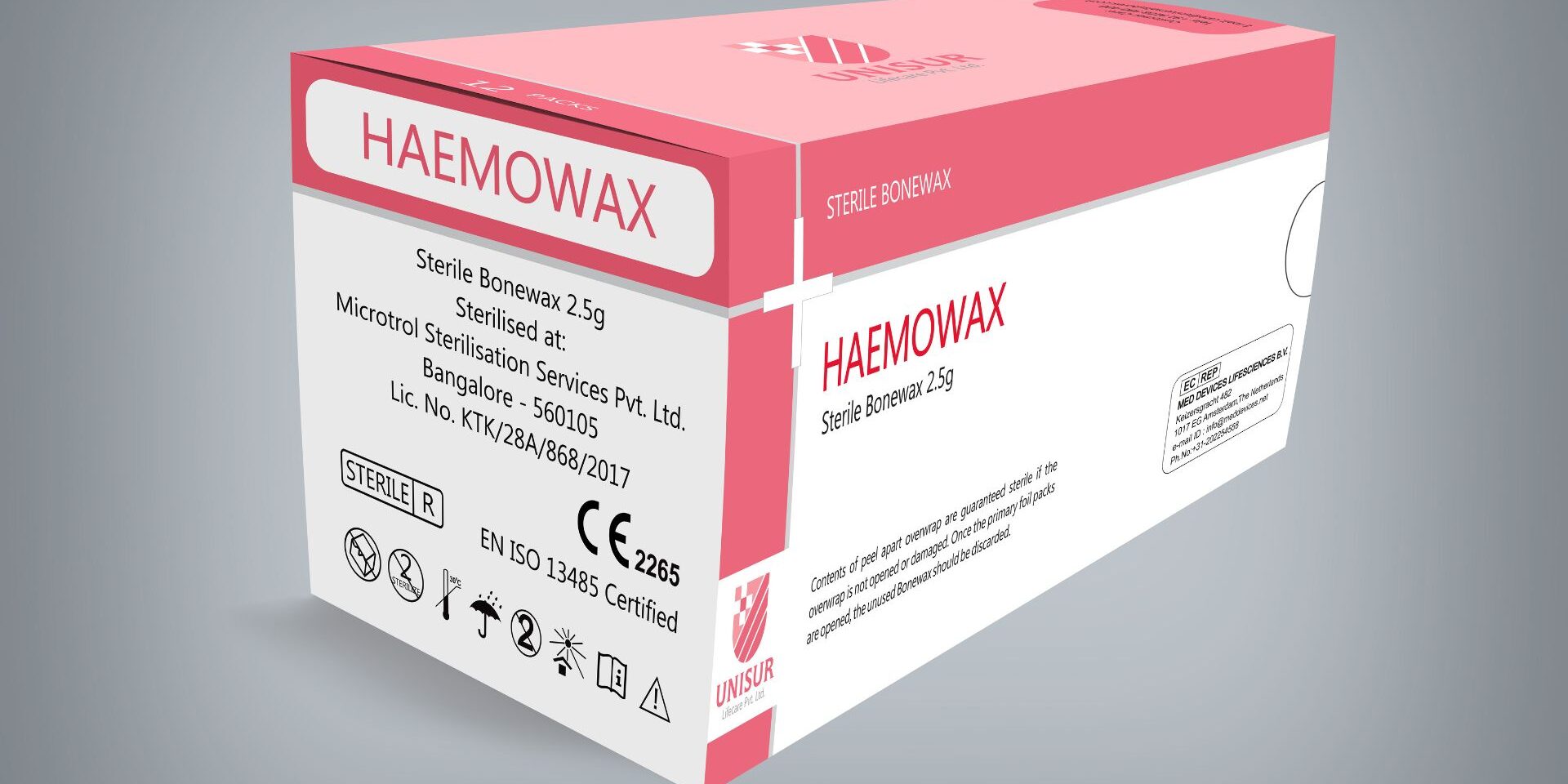During surgery, maintaining a clear operating field and minimizing blood loss are critical for the surgeon’s precision and the patient’s well-being. While scalpels and sutures take center stage, a lesser-known hero plays a vital role: bone wax.
Bone wax, a sterile, absorbable compound applied to bone surfaces, offers several key benefits that contribute to a smooth surgical experience:
- Bleeding Control: When bone is cut, it bleeds readily. Bone wax acts as a temporary hemostatic agent, sealing small blood vessels on the bone surface. This reduces blood loss, improving visibility for the surgeon and minimizing blood loss for the patient.
- Improved Visualization: A blood-free surgical field allows the surgeon to clearly see the anatomy, leading to more precise and efficient procedures. Bone wax helps maintain a clear field by stemming blood flow and preventing blood from obscuring the surgical area.
- Reduced Tissue Trauma: Excessive manipulation of bleeding tissues during surgery can cause additional damage. By controlling bleeding, bone wax minimizes the need for constant pressure or packing of tissues, leading to a less traumatic surgical experience for the patient.
- Faster Procedure Times: Reduced blood loss and improved visualization can translate to faster surgical times. This translates to less anesthesia time for the patient, potentially reducing the risk of complications associated with prolonged anesthesia.
- Ease of Use: Bone wax is a readily available and easy-to-use tool for surgeons. It can be applied quickly and effectively, minimizing disruptions to the surgical flow.
Beyond its immediate benefits, bone wax also contributes to a smoother post-operative experience. Reduced blood loss during surgery can lead to less post-operative pain and swelling for the patient. Additionally, the temporary nature of bone wax ensures it is eventually absorbed by the body, eliminating the need for its removal.
In conclusion, bone wax, though a seemingly simple tool, plays a crucial role in facilitating a smooth surgical experience. By controlling bleeding, improving visualization, and minimizing tissue trauma, bone wax contributes to better surgical outcomes for both patients and surgeons.
FAQ
What is bone wax used for?
Bone wax is used to control bleeding from bone surfaces during surgery.
How does bone wax work?
Bone wax acts as a temporary plug, sealing small blood vessels on the bone surface and reducing blood flow.
Is bone wax safe?
Bone wax is a sterile and biocompatible material. However, as with any foreign body introduced into the body, there is a small risk of infection or allergic reaction.
Does bone wax dissolve?
Yes, most bone wax is absorbable and will eventually be broken down and absorbed by the body.
Are there any alternatives to bone wax?
While bone wax is the most common hemostatic agent used for bleeding bone, other options like topical hemostatic agents or electrocautery may be used in specific situations.



















